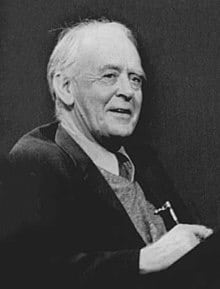In the realm of economics, understanding human preferences and decision-making processes is crucial to unraveling the complexities of consumer behavior. Two fundamental concepts that shed light on this intricate subject are cardinal and ordinal utility.
Define Utility
Satisfaction drawn by the consumer from consuming a certain amount of good is called utility. This blog shows the difference between cardinal and ordinal utility.
Cardinal Utility
Cardinal utility refers to assigning numerical values to measure the satisfaction or utility a person experiences from consuming goods or services. it assumes that utility can be quantified and compared across individuals.
- Measureabliblty of utility is controversial
- Classical economists, etc viz, jeremy bentham Leon Walrus, Carl Menger, etc believed that utility is quantitatively measurable like height, weight, length, temperature, and air pressure.
- This belief resulted in the cardinal utility concept

According to non-economist
- The utility can be measured in terms of money.
- i.e, the utility of a unit of a commodity of a person is equal to the amount of money he is willing to pay for it
- Jevon in 1871 coined and used the term”util”.
Example
| No of items | Utils per consumption | |
| Banana Pineapple oranges watermelon | 5 4 7 9 |
Ordinal Utility
Ordinal utility is a concept in economics that relates to the ranking or ordering of preferences without assigning specific numerical values to them. It recognizes that individuals can establish a subjective ranking of different alternatives or options based on their preference order.
- For example, suppose there are three options: A, B, and C. Ordinal utility theory allows individuals to rank these options based on their preference order. If an individual prefers option A the most, followed by option B, and then option C, the ranking would be A > B > C.
- This ranking indicates the individual’s ordinal utility, reflecting the preference order among the alternatives.

Sir John Richards Hicks (8 April 1904 – 20 May 1989) was a British economist. He is considered one of the most important and influential economists of the twentieth century.
Example
| No of items | Ranks per consumption | |
| Oranges Banana Dragon fruit Lichi | I IV II III |

Difference between cardinal utility and ordinal utility
| Cardinal utility | Ordinal utility |
| Assigns numerical values to preferences | Does not assign numerical values to preferences |
| Quantifies the intensity of preferences | Focuses on the relative ranking of preferences |
| Enables precise comparisons of utility levels between options | Allows for comparisons based on preference order |
| Supports quantitative analysis | Provides a qualitative understanding of preferences |
| Facilitates mathematical calculations and measurements | Does not involve mathematical calculations or measurements |
| Example: Assigning a utility value of 8 to apples and 5 to oranges | Example: Ranking apples higher than oranges |
Conclusion
Cardinal utility and ordinal utility are instrumental in understanding consumer behavior and informing decision-making. The difference between cardinal utility and ordinal utility lies primarily in their approach to analyzing utility. Cardinal utility theory centers around allocating specific numerical values to the utility, offering a quantitative measure. In contrast, ordinal utility theory accentuates the importance of preference order, with less emphasis on the actual numerical value. Historically, cardinal utility held significant influence, but contemporary economics has seen a major shift towards ordinal utility, valuing its practicality and empirical pertinence. Grasping these two perspectives on utility, with their distinguishing differences, allows economists and policymakers to delve deeper into consumer decision-making and enhance the efficiency of resource distribution in a variety of economic scenarios.
Comment below and share your thought, if you like the post please share it.
Also Please check out What Is The Difference Between Total Utility And Marginal Utility



0 Comments